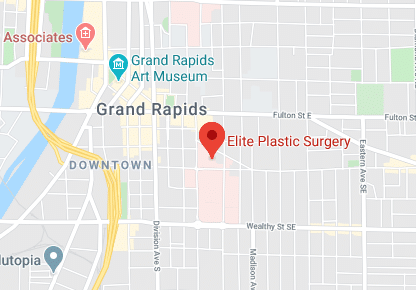
Here is some information about common scars and possible revision approaches with the team at Elite Plastic Surgery.
Patience at first
As you would expect, scars usually are at their ugliest early on after the injury. Most scars become less noticeable with time. Plus, we can treat some scars with steroids to relieve tenderness and itching and to possibly shrink them. This doesn’t always work but is usually the course of action before any surgical solutions.
Also, scars change over time, especially early on after the injury. For that reason, we usually suggest our patients wait at least one year after their injury to opt to have scar revision surgery.
Types of scars
You may not know this, but there are different types of scars. They have different characteristics and can call for different treatment methods.
- Keloid scars
Keloid scars are thick, puckered, itchy clusters of scar tissue that extend beyond the edges of the original wound or incisions. They are often red or darker in color than the adjacent skin. Keloids develop when the body continues to produce collagen in the area of the injury after a wound has already healed.
Keloid scars are more common in darker-skinned people, and they are most common on the breastbone, on the earlobes, and on the shoulders.
- Hypertrophic scars
Hypertrophic scars look like keloid scars with one important difference — they remain within the boundaries of the original wound or incision. Like keloid scars, they are thick, red, and raised. They often improve with time or with steroid injections.
- Contractures
Burns or other injuries that create a loss of a large area of skin may form a scar that pulls the edges of the skin together. This process is called contraction and gives this scar its name, contracture. Contractures may affect the adjacent muscles and tendons, restricting a normal range of motion and movement.
Surgical revision
In revision surgery, the scar tissue is cut out. How this is done involves the different approaches. Sometimes simply cutting the scar out and closing the incision with tiny stitches vastly reduces the scar. Other times, we may use Z-plastic, a surgical technique that repositions a scar so that it more closely conforms to the natural lines and creases of the skin, where it will be less noticeable. In Z-plastic, the old scar is removed, and new incisions are made on each side, creating small triangular flaps of skin. These flaps are then rearranged to cover the wound at a different angle, creating a “Z” pattern. More complicated options are skin grafts and flap surgery.
A critical facet of scar revision is the experience of your surgeon. That’s where you can trust the expertise of the entire Elite Plastic Surgery team. If you’re interested in possibly doing something about a visible scar, call us and let’s take a look, 616-459-1907.


No comments yet.